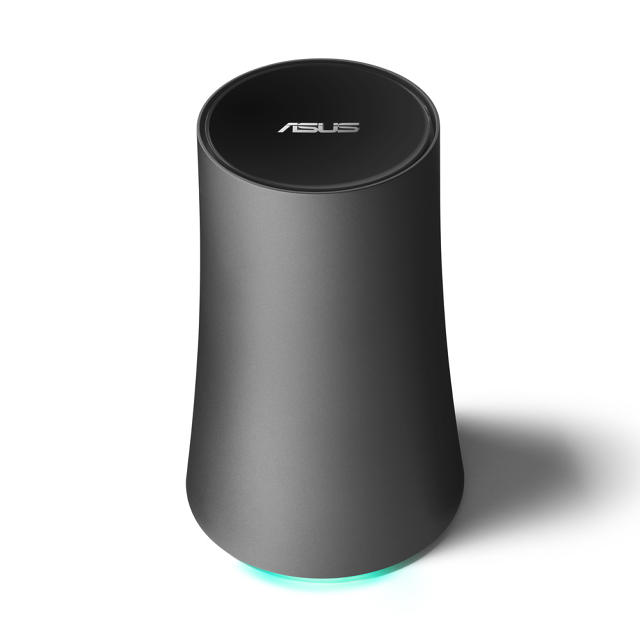When Google released the first OnHub back in August, it did so with the mission of not only making the most human-centric, easy-to-use Wi-Fi router ever, but to design a router you wouldn't want to hide away in a corner, where its signal might degrade. For its second OnHub, Google wants you to do something even more interesting: physically interact with your router through a fun and playful affordance. To get better Wi-Fi speed when bandwidth is at a premium, all you need to do is wave.
By passing your hand over the router, you can automatically tell your OnHub to give a pre-determined device in your home priority over all other connections for the next few hours. Wave your hand over it again, and priority mode shuts off. That way, if you're watching Netflix on your tablet while your roommate is torrenting something on their laptop, you can make sure your OnHub keeps the video buffering to a minimum.

The original OnHub always had the ability to manage priority devices through its app—and still does—but by giving the Asus OnHub motion controls, Google has taken another small step towards establishing a more intuitive relationship between the user and the router. A router you can have a meaningful physical interaction with is just another reason not to hide it away somewhere that prevents it from doing its job well.
Physically, the new Asus OnHub isn't all that different from the first model, which was built by T-Link. Like its predecessor, it's a an array of 13 high performance Wi-Fi antennas, arranged in a cylinder. Whereas the previous OnHub looked a little like a combination between a Bluetooth speaker and a Muji-designed trashcan, Asus's OnHub has more of an organic, hourglass shape which seems more sculptural and vase-like.

According to product manager Ben Brown, there are good reasons why Google is teaming up with multiple OEMs. While the OnHub wants to be a router for the rest of us, people still have a lot of brand loyalty to companies like T-Link, and Asus. But it's also about letting different companies play and adapt with the OnHub's form factor. Since these routers are designed to sit out in the open, they don't want OnHub to be a one-design-fits-all product: it's important that people be able to pick one that matches their own personal aesthetic and decor, which means letting many designers have a go at it. "We wanted to have a selection of design choices, something that makes picking a router not just a necessity, but something customers have agency in choosing," he says.
What does unite both the T-Link and Asus OnHubs is their distinctive cylindrical shapes, a far-cry from the blinking plastic boxes that most of us have tethered to our broadband connection. Part of that shape is form following function: the OnHub's array of antennas are able to give superior Wi-Fi coverage to a house because of their circular arrangement. But Brown says that the cylinder is also a concerted effort to break the black box paradigm in router design that results in so many routers being shoved into a stack of gadgets, or inside a closet or entertainment center. The more you hide a router from view, the worse your Wi-Fi signal is. "We wanted to change the conversation a bit," Brown says. "It was important they look and feel different to bring them out of the closet."
The Asus OnHub goes on pre-sale today, starting at $220. You can order one here.